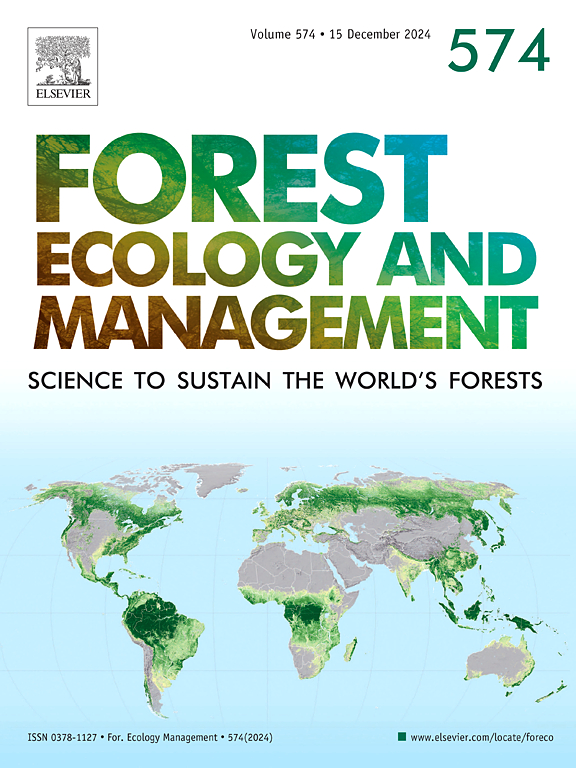Climate sensitivity of Abies alba Mill. in marginal Mediterranean low-elevation stands reveals new insights into the ecological potential of the species
IF 3.7
2区 农林科学
Q1 FORESTRY
引用次数: 0
Abstract
Understanding the ecological needs of forest tree species at the warm edge of their range can provide valuable information for management strategies in a warming climate. Here, we carried out a dendroecological study focusing on submediterranean and mesomediterranean low elevation (i.e., 30–800 m asl) marginal stands of Abies alba Mill. (silver fir) under warm mean July-August temperatures of 23–25 °C. Such marginal stands are compared to an Apennine core stand at 1450 m asl in central Italy amid the climatic niche with optimal growing conditions. Additionally, we used understory vegetation surveys to assess local growing conditions. During periods of low growth rates, the growth of low-elevation stands is significantly influenced by both short-term current-year climatic signals (monthly to seasonal; immediate effect on growth) and long-term (pluriannual) cumulative signals, whereas the strength of the climatic influence progressively increases from the monthly to the multi-annual scale. Trees are adversely affected by high summer and early autumn temperatures and drought and benefit from sufficient rainfall in late summer, autumn, and early winter, in addition to spring rainfall. Moreover, when temperature and moisture are high, low-elevation stands likely benefit from a prolonged late growing season. These findings illustrate that the growth of A. alba at low elevations is rather limited by moisture availability than high temperatures. In contrast, silver fir in the cooler and moister uppermost reference stand was less affected by current year drought and cumulative climatic effects. Our results confirm the potential of A. alba to thrive under warm climates, as previously evidenced by palaeoecological data and dynamic modelling. However, in Mediterranean ecosystems, this capacity is modulated by local growing conditions, highlighting the need for site-oriented management strategies.
求助全文
约1分钟内获得全文
求助全文
来源期刊

Forest Ecology and Management
农林科学-林学
CiteScore
7.50
自引率
10.80%
发文量
665
审稿时长
39 days
期刊介绍:
Forest Ecology and Management publishes scientific articles linking forest ecology with forest management, focusing on the application of biological, ecological and social knowledge to the management and conservation of plantations and natural forests. The scope of the journal includes all forest ecosystems of the world.
A peer-review process ensures the quality and international interest of the manuscripts accepted for publication. The journal encourages communication between scientists in disparate fields who share a common interest in ecology and forest management, bridging the gap between research workers and forest managers.
We encourage submission of papers that will have the strongest interest and value to the Journal''s international readership. Some key features of papers with strong interest include:
1. Clear connections between the ecology and management of forests;
2. Novel ideas or approaches to important challenges in forest ecology and management;
3. Studies that address a population of interest beyond the scale of single research sites, Three key points in the design of forest experiments, Forest Ecology and Management 255 (2008) 2022-2023);
4. Review Articles on timely, important topics. Authors are welcome to contact one of the editors to discuss the suitability of a potential review manuscript.
The Journal encourages proposals for special issues examining important areas of forest ecology and management. Potential guest editors should contact any of the Editors to begin discussions about topics, potential papers, and other details.
 求助内容:
求助内容: 应助结果提醒方式:
应助结果提醒方式:


